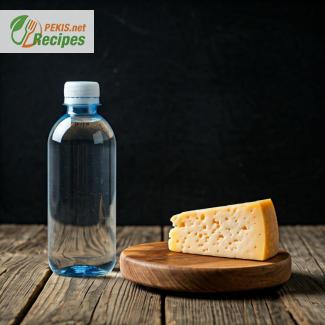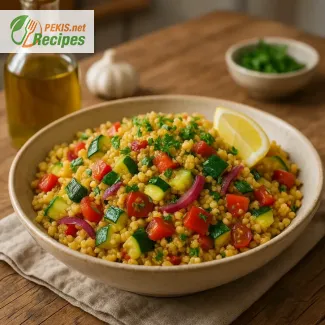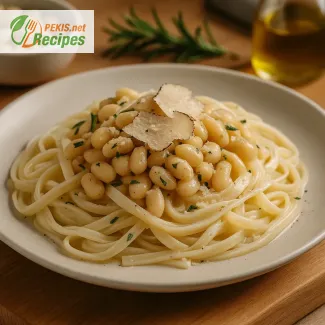
Rennet is an essential ingredient in the world of cheese-making, renowned for its ability to transform milk into delicious, creamy curds. Whether you're crafting artisan cheese at home or scaling up to professional production, understanding rennet is the key to achieving the perfect texture and flavor in your creations. Available in both liquid and tablet form, rennet offers versatile options to suit various needs and preferences.
What Is Rennet?
Rennet is a natural enzyme used to coagulate milk, separating it into solid curds and liquid whey, the foundation for cheese-making. Traditionally derived from the stomach linings of ruminant animals, rennet now comes in animal-derived, microbial, and vegetarian forms, catering to a variety of dietary requirements and ethical considerations.
The role of rennet extends beyond coagulation. It also influences the cheese's maturation process, determining its final texture and flavor profile. This makes choosing the right form of rennet and mastering its application a crucial aspect of successful cheese-making.
Liquid Rennet: Convenience and Precision
Liquid rennet is prized for its ease of use and precise measurability, making it a favorite among both beginners and experienced cheesemakers. A few drops go a long way, ensuring consistent results with minimal effort. Liquid rennet dissolves easily in water, allowing for even distribution throughout the milk.
This form of rennet is ideal for soft cheeses like mozzarella, ricotta, and cream cheese, where a gentle coagulation process is required. Its quick action ensures smooth curds that are easy to handle, resulting in a silky texture that enhances the cheese's overall quality.
Rennet Tablets: Long Shelf Life and Versatility
Rennet tablets are a compact and reliable option, offering an extended shelf life compared to their liquid counterpart. Each tablet contains a measured amount of enzyme, ensuring consistency in every batch. These tablets are often preferred for harder cheeses, such as cheddar, Parmesan, and Gouda, where a slower coagulation process is beneficial for developing a firmer texture.
To use rennet tablets, simply dissolve them in water before adding them to the milk. Their portability and stability make them a great choice for cheesemakers working in varied environments, including small-scale kitchens and professional setups.
Key Differences Between Liquid and Tablet Rennet
- Shelf Life: Liquid rennet has a shorter shelf life but is easier to measure accurately. Tablets, on the other hand, last longer and are ideal for sporadic use.
- Application: Liquid rennet is better suited for soft cheeses, while tablets excel in crafting harder varieties.
- Storage: Liquid rennet requires refrigeration, while tablets can be stored at room temperature in a cool, dry place.
Choosing the Right Rennet for Your Needs
Selecting between liquid and tablet rennet depends on your cheese-making goals and preferences. If you're just starting, liquid rennet may provide the flexibility and simplicity you need to build confidence in the process. For seasoned cheesemakers or those focusing on hard cheeses, tablets offer a cost-effective and dependable solution.
Tips for Successful Cheese-Making
- Always follow the recommended dosage for your chosen rennet to avoid under- or over-coagulation.
- Dissolve rennet in cool, non-chlorinated water to preserve its enzyme activity.
- Work with milk at the appropriate temperature to ensure optimal coagulation.
- Store rennet in a cool, dry place to maintain its potency over time.
Mastering the use of rennet is a journey that opens the door to an incredible array of cheeses. Whether you prefer the precision of liquid rennet or the convenience of tablets, both options deliver excellent results when used correctly. Embrace the art of cheese-making with confidence, knowing that the right rennet will elevate your creations to new heights of flavor and texture.
Rennet is more than just an ingredient; it’s the bridge between ordinary milk and extraordinary cheese. Let it inspire your culinary journey, as you transform simple ingredients into something truly remarkable.
- Prepare the Milk
Pour the milk into a large, clean pot. Heat gently over low heat until the temperature reaches 32°C (89.6°F). Use a food-grade thermometer for accuracy. Stir occasionally to prevent scorching. - Add the Rennet
If using liquid rennet, measure 2 ml (0.04 tsp) and dilute it in 50 ml (1.7 fl oz) cool, non-chlorinated water. If using a tablet, dissolve ½ tablet in 50 ml (1.7 fl oz) cool water. Gently stir the diluted rennet into the warm milk for about 30 seconds. - Let the Milk Coagulate
Cover the pot and allow the milk to rest undisturbed for 30 minutes. The milk should form a firm curd. Test by gently inserting a knife into the curd; it should cleanly separate. - Cut the Curds
Use a long knife to cut the curds into 1-2 cm (0.4-0.8 inch) cubes. Let the curds rest for 5 minutes. - Heat and Stir
Gradually heat the curds to 38°C (100.4°F) while gently stirring to prevent sticking. Maintain this temperature for 10-15 minutes until the curds firm up slightly. - Drain the Whey
Pour the curds into a cheesecloth-lined colander. Let the whey drain for 5-10 minutes. Add salt to taste, mixing gently to distribute evenly. - Shape the Cheese
Transfer the curds into a cheese mold or press. Apply light pressure to shape the cheese and expel excess whey. Let it rest for 1-2 hours. - Store and Serve
Refrigerate the cheese for at least 2 hours before serving. Enjoy it fresh as a snack, in salads, or paired with bread and fruit.
Enhancing Your Homemade Cheese Recipe: Tips and Ingredient Modifications
Crafting homemade cheese is both an art and a science. The quality of ingredients and the methods you use directly affect the texture, flavor, and overall result of your cheese. If you're looking to experiment or tailor the recipe to specific tastes or dietary needs, here are some professional tips and ingredient substitutions that can help elevate your cheese-making experience.
The Role of Milk in Cheese Flavor and Texture
Milk is the foundation of cheese-making, and its type and quality significantly influence the final product.
- Fresh Whole Milk: Using fresh, high-quality whole milk ensures a creamy texture and a rich flavor. Opt for non-homogenized milk, as the cream layer contributes to a smoother cheese.
- Goat Milk: Replacing cow milk with goat milk gives the cheese a tangy and slightly earthy flavor. Goat milk is also softer in texture due to smaller fat globules.
- Sheep Milk: Known for its high fat and protein content, sheep milk creates a creamier, richer cheese. It's perfect for soft cheeses.
- Plant-Based Milk: For a vegan alternative, use soy or almond milk combined with a non-dairy rennet. Keep in mind that plant-based cheeses tend to be softer and may lack the traditional tang of dairy-based cheeses.
Adjusting Rennet for Consistency
Rennet plays a critical role in curd formation and texture. Adjusting the type or amount of rennet can result in subtle changes to your cheese.
- Liquid Rennet: Using liquid rennet allows for precise measurement, leading to consistent results. If you want firmer curds, slightly increase the rennet quantity.
- Tablet Rennet: Tablets are ideal for firmer cheeses like cheddar or Parmesan. Dissolve them thoroughly in water to avoid uneven coagulation.
- Vegetarian Rennet: For a plant-based option, substitute traditional rennet with microbial or vegetable-based rennet. The resulting cheese may have a slightly milder flavor.
Salt Variations for Flavor
Salt not only enhances the flavor but also acts as a preservative. The type and amount of salt can alter your cheese’s taste and storage properties.
- Sea Salt: Adds a subtle mineral complexity to the cheese.
- Kosher Salt: Dissolves easily and provides a clean, non-iodized taste.
- Herb-Infused Salt: Infuse your cheese with additional flavors by using salt mixed with dried herbs or spices like rosemary or thyme.
Exploring Additional Ingredients
You can enhance the flavor and texture of your cheese by incorporating other ingredients into the recipe.
- Herbs and Spices: Adding fresh or dried herbs such as chives, dill, or garlic can elevate the flavor profile. Mix these into the curds before pressing.
- Nuts: Incorporate finely chopped nuts, like walnuts or almonds, for a crunchy texture and nutty undertone.
- Cream: For an extra creamy cheese, add a small amount of cream to the milk during the heating process.
Modifying Preparation Steps
Even small adjustments to the cheese-making process can yield noticeable differences in the final product.
Temperature Adjustments
- Lower Coagulation Temperature: If you prefer softer cheese, reduce the milk temperature to 30°C (86°F) before adding the rennet.
- Higher Coagulation Temperature: For firmer curds, maintain the milk temperature closer to 34°C (93°F).
Curds Handling
- Cutting the Curds: Smaller curds result in drier cheese, while larger curds create a moister texture. Adjust the size depending on your desired outcome.
- Stirring Time: Prolonged stirring during the heating phase produces a firmer texture, as more whey is released from the curds.
Pressing and Molding
- Pressure: Light pressure results in a soft cheese, while heavier pressure is ideal for aged, firm cheeses. Experiment with different weights to find your preferred texture.
- Shape and Size: Use molds to shape your cheese into rounds, blocks, or logs for variety in presentation.
Experimenting with Storage and Aging
How you store or age your cheese impacts its flavor development and texture.
- Fresh Cheese: For immediate consumption, refrigerate the cheese in an airtight container for up to one week. This method preserves the fresh, tangy flavor.
- Aging: Allowing the cheese to age develops deeper flavors and firmer textures. Wrap the cheese in wax or a breathable cloth, and store it in a cool, humid environment.
Dietary Modifications
If you're catering to specific dietary needs, the recipe can easily be adapted.
- Low-Sodium Option: Reduce the salt content and add fresh herbs for flavor enhancement.
- Lactose-Free Cheese: Use lactose-free milk, which curdles similarly to regular milk when combined with rennet.
- Vegan Cheese: Substitute animal-based ingredients with plant-based milk and vegan rennet, keeping in mind that the flavor and texture will differ.
How Changes Affect the Final Cheese
- Flavor: Variations in milk type, salt, and additional ingredients like herbs will directly influence the cheese’s flavor profile, making it milder, tangier, or more complex.
- Texture: Modifying curd size, stirring time, and pressing pressure alters the cheese’s firmness or creaminess.
- Appearance: Changes in shaping and storage methods allow you to create visually appealing cheeses tailored to different occasions.
Homemade cheese is a versatile canvas for creativity, offering endless opportunities to experiment with ingredients and methods. By making thoughtful adjustments, you can tailor each batch to suit your preferences or dietary needs, ensuring a truly personalized and satisfying cheese-making experience. With practice, you'll master the balance of science and artistry that defines this timeless culinary craft.
Contains milk (dairy allergen). Gluten-free.
Substitutions for Allergens
- Use plant-based milk (soy or almond) with a suitable non-dairy rennet to make a vegan version.
- Replace animal rennet with microbial or vegetarian rennet for a vegetarian-friendly option.
- Calcium: 300 mg – Essential for bone health and muscle function.
- Vitamin D: 1 µg – Supports calcium absorption and immune health.
- Potassium: 120 mg – Aids in regulating blood pressure and heart function.
- Magnesium: 25 mg – Crucial for muscle and nerve function.
- Vitamin A: 50 µg – Promotes good vision and skin health.
- Beta-carotene: Trace amounts – Protects cells from oxidative stress.
This homemade cheese recipe combines simplicity and tradition, allowing you to create a delicious, fresh product tailored to your preferences.





